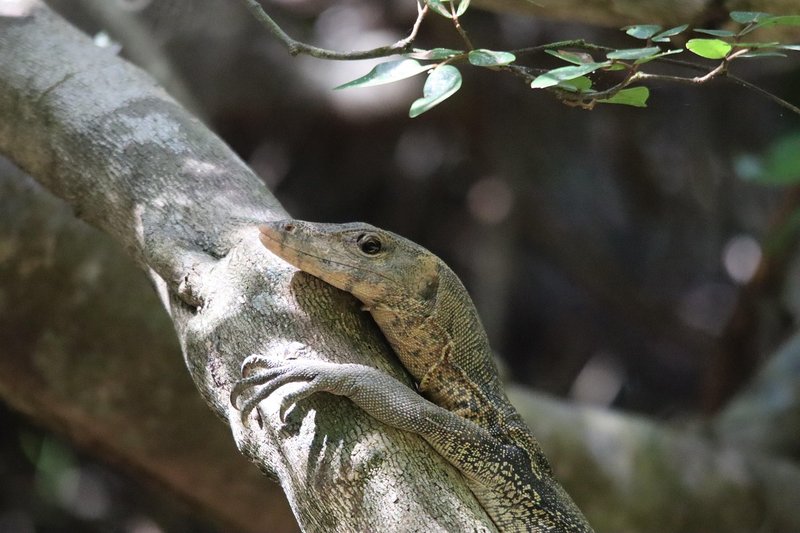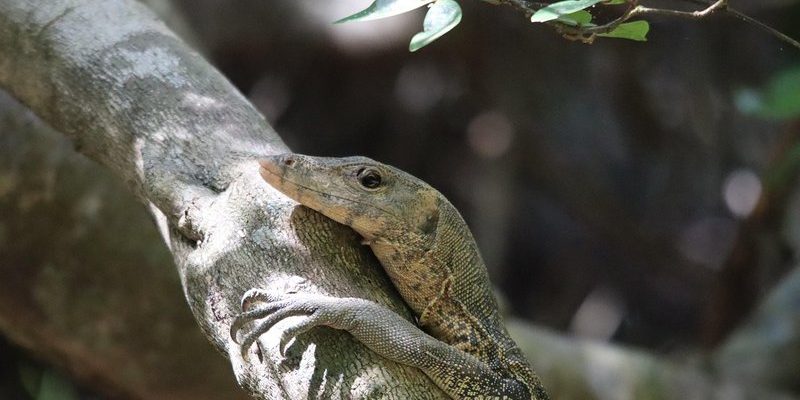
Found across various regions, especially in Africa, Asia, and Australia, monitor lizards are part of a broad family that includes more than 70 species. From the massive Komodo dragon to the smaller savannah monitor, these lizards come in all shapes and sizes. But regardless of their size, what truly matters is their role in keeping nature in check, their dietary preferences, and their delicate relationship with the environment. Let me explain the significance of these incredible creatures.
What Are Monitor Lizards?
So, what exactly is a monitor lizard? These reptiles belong to the family Varanidae and are known for their long necks, powerful limbs, and sharp claws. They vary in size and habitat preferences, with some species thriving in forests while others prefer grasslands or even deserts.
You might be surprised to learn that monitor lizards are quite intelligent, displaying behaviors that suggest a level of problem-solving ability and social interaction. For instance, some species can learn to recognize their owners and may even exhibit affection—how cool is that?
Monitor lizards are amazing climbers and swimmers, which helps them explore their environment for food. Their diets can range from fruits and insects to larger prey like birds, rodents, and even other reptiles. This versatile diet makes them effective predators in their ecosystems.
The Ecological Role of Monitor Lizards
Monitor lizards are like nature’s clean-up crew. As predators, they help control the populations of smaller animals such as rodents and insects. By keeping these populations in check, they prevent overpopulation, which can lead to a lack of resources and habitat degradation.
These lizards also play a significant role in the food web. They are prey for larger carnivores, such as birds of prey and big cats. This gives monitor lizards a vital place in the ecosystem, as they help sustain the balance among various animal species.
Additionally, their burrowing habits can aerate the soil, promoting healthier plant life. This contributes to the overall health of their habitat, making it more sustainable for all living beings in the area.
Monitor Lizards as Indicators of Environmental Health
Here’s the thing: monitor lizards can tell us a lot about the health of their environment. Because they occupy different niches within their ecosystems, changes in their populations can signal shifts in environmental conditions. For example, a decline in monitor lizard numbers could indicate habitat destruction or pollution.
Scientists often study these lizards to assess the impacts of climate change and other ecological stressors. By monitoring their health and behavior, researchers can gauge the overall well-being of their ecosystem. So, in a way, they serve as a barometer for ecological health—more reason to appreciate these cool reptiles!
Breeding and Life Cycle of Monitor Lizards
Monitor lizards typically lay eggs, and their breeding habits can vary from one species to another. Some lizards build nests to protect their eggs, while others might simply bury them in the soil. The incubation period can last from several weeks to a few months, depending on environmental conditions.
Babies are usually independent from the get-go, relying on their instincts to find food and evade predators. This is another fascinating aspect of monitor lizards; they grow quickly, and their appearance can change dramatically as they age. Young monitors might have more vibrant colors compared to their adult counterparts, making them look quite different as they mature.
This fast growth can be beneficial in the wild, allowing them to reach reproductive maturity in a shorter time. Here’s where their role becomes even more vital: as adults, they start contributing to their populations, ensuring the survival of their species.
Challenges Monitor Lizards Face
Unfortunately, monitor lizards are not without their challenges. Habitat destruction due to urban development, deforestation, and pollution are significant threats to their populations. Overhunting and the illegal wildlife trade also pose a grave risk. As these reptiles become more sought after for exotic pets or traditional medicine, their numbers dwindle.
You might be wondering what can be done. Conservation efforts are essential to protecting monitor lizards and their habitats. By creating protected areas and implementing sustainable practices, we can help ensure that these remarkable creatures continue to thrive. Awareness and education about their importance can also play a key role in their survival.
In essence, monitor lizards are more than just extraordinary reptiles; they are pivotal players in their ecosystems. They help maintain the balance of nature, serve as indicators of environmental health, and contribute to the biodiversity that sustains life on our planet.
So, the next time you think of wildlife, remember that even the lesser-known creatures have vital roles to play. By protecting monitor lizards and their habitats, we’re not just saving a species—we’re also preserving the delicate threads that weave together the tapestry of life on Earth. With every step we take toward conservation, we support the countless relationships that exist within these ecosystems. Let’s keep the conversation going about how we can help!

